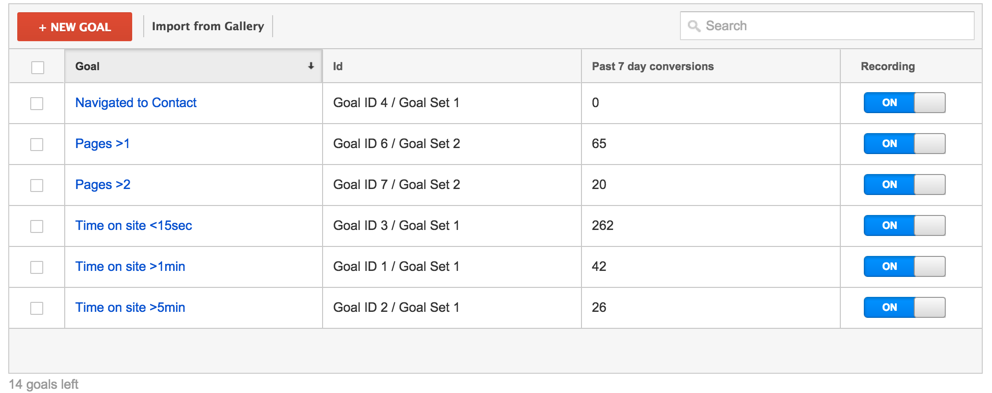Key Insights on What Data Is Google Analytics Goals Unable to Track
Key Insights on What Data Is Google Analytics Goals Unable to Track
Blog Article
Discover the Limitations of Google Analytics Goals: Introducing the Information Types That Remain Untrackable
As services progressively depend on data-driven decision-making, comprehending the limitations of devices like Google Analytics ends up being extremely important. While Google Analytics Goals deal valuable insights right into individual communications, there exist information types that thwart monitoring, posing difficulties to a detailed understanding of user behavior.
Insufficient Customer Trip Tracking
Insufficient user journey tracking within Google Analytics can prevent the ability to accurately assess user actions. When the customer trip is not totally tracked, there are gaps in the data that avoid a detailed understanding of how users interact with an internet site. This absence of understanding can result in missed out on opportunities for optimization and enhancements to the individual experience.
One common issue with incomplete individual trip tracking is the lack of ability to see the complete course that users take in the past completing an objective or leaving the website. Without this info, it is challenging to identify where users may be coming across obstacles or rubbing points that avoid them from converting. In addition, insufficient tracking can cover the influence of specific marketing efforts or site modifications on customer habits.
To address this restriction, it is crucial to establish correct tracking mechanisms within Google Analytics to record the whole user trip. This might include setting up occasion monitoring, objective funnels, or using devices like Google Tag Supervisor to make sure that no crucial communications go unrecorded. By acquiring a thorough sight of the user journey, web site proprietors can make more educated decisions to improve individual interaction and drive conversions.
Attribution Obstacles
Browsing through attribution challenges in Google Analytics requires a thorough understanding of how different touchpoints add to the total conversion procedure. Attribution difficulties develop from the intricacy of modern consumer trips, where individuals interact with numerous channels prior to transforming. Google Analytics supplies various acknowledgment versions like initial touch, last touch, and direct, each providing a various perspective on just how credit scores is designated to touchpoints along the conversion path. These versions might not constantly precisely reflect the true effect of each touchpoint on the conversion.
One usual attribution challenge is the trouble in associating conversions to the correct resource, specifically in instances where users engage with several networks prior to transforming. Furthermore, cross-device monitoring poses an additional attribution challenge, as users usually switch over between gadgets throughout their trip, making it testing to track their interactions perfectly.
Offline Conversions
Given the obstacles connected with associating conversions precisely in online networks, the dimension of offline conversions offers a significant chance for marketing professionals looking for a much more thorough understanding of their consumers' journey. Offline conversions describe activities that clients take in the real world, such as making acquisitions in brick-and-mortar stores or over the phone, attending occasions, or engaging with published products - what data is google analytics goals unable to track. These conversions are essential for businesses that run both online and offline, as they give valuable understandings into the effectiveness of advertising and marketing projects throughout different touchpoints
Tracking offline conversions typically postured a significant challenge for online marketers, as it was challenging to link these actions back to particular online interactions accurately. Nevertheless, with improvements in innovation, such as the assimilation of CRM systems, special identifiers, and promo code codes, companies can now bridge the gap between online and offline data to get a more all natural sight of consumer behavior. By effectively determining offline conversions, marketing experts can optimize their methods, allocate sources much more successfully, and inevitably boost the total client experience.
Cross-Device Tracking
Cross-device tracking plays a vital duty in comprehending the interconnected nature of customers' digital communications across several tools. In today's omnichannel world, where individuals effortlessly switch over between tablet computers, smartphones, and desktop computers, tracking their habits across these tools is essential for online marketers to get a detailed sight of their consumer trip.

In addition, personal privacy issues and regulations such as GDPR and CCPA have even more challenging cross-device tracking. With users demanding even more control over their data and increased constraints on monitoring technologies, marketers need to find cutting-edge and privacy-compliant ways to connect user interactions across devices.
Dynamic Material Interaction
Understanding customer engagement with dynamic web content is essential in optimizing electronic marketing approaches for enhanced audience communication. Dynamic web content describes internet site elements that change based on user habits, choices, or various other factors, supplying a customized experience. Tracking user interactions with dynamic material poses difficulties for conventional analytics tools like Google Analytics.
While Google Analytics can track standard interactions like clicks and web page views, it may battle to capture more nuanced engagements within vibrant content. what data is google analytics goals unable to track. Metrics such as time invested in certain dynamic aspects, float actions, or communications within pop-ups are often not easily measurable utilizing conventional tracking approaches. This restriction impedes marketing experts' capability to totally grasp how users are involving with dynamic content and customize their techniques accordingly

Final Thought
In verdict, Google Analytics objectives have limitations in tracking incomplete individual trips, associating conversions precisely, catching offline conversions, tracking cross-device communications, and determining vibrant material engagement. These constraints highlight the value of discovering additional tracking approaches and devices to get a more comprehensive understanding of user behavior and conversions past what Google Analytics can provide.
While Google Analytics Goals deal valuable insights into user interactions, there exist data kinds that thwart tracking, posing obstacles to an extensive understanding of individual behavior.Insufficient individual trip tracking within Google Analytics can impede the capacity to accurately analyze customer habits. When the user journey is not completely tracked, there are spaces in the data that stop a comprehensive understanding of exactly how individuals communicate with a website.One typical problem with incomplete individual journey tracking is the failure to see the full path that individuals take previously completing a goal or leaving the site. By acquiring a comprehensive view of the customer journey, website proprietors can make even more enlightened decisions to enhance user engagement and drive conversions.
Report this page